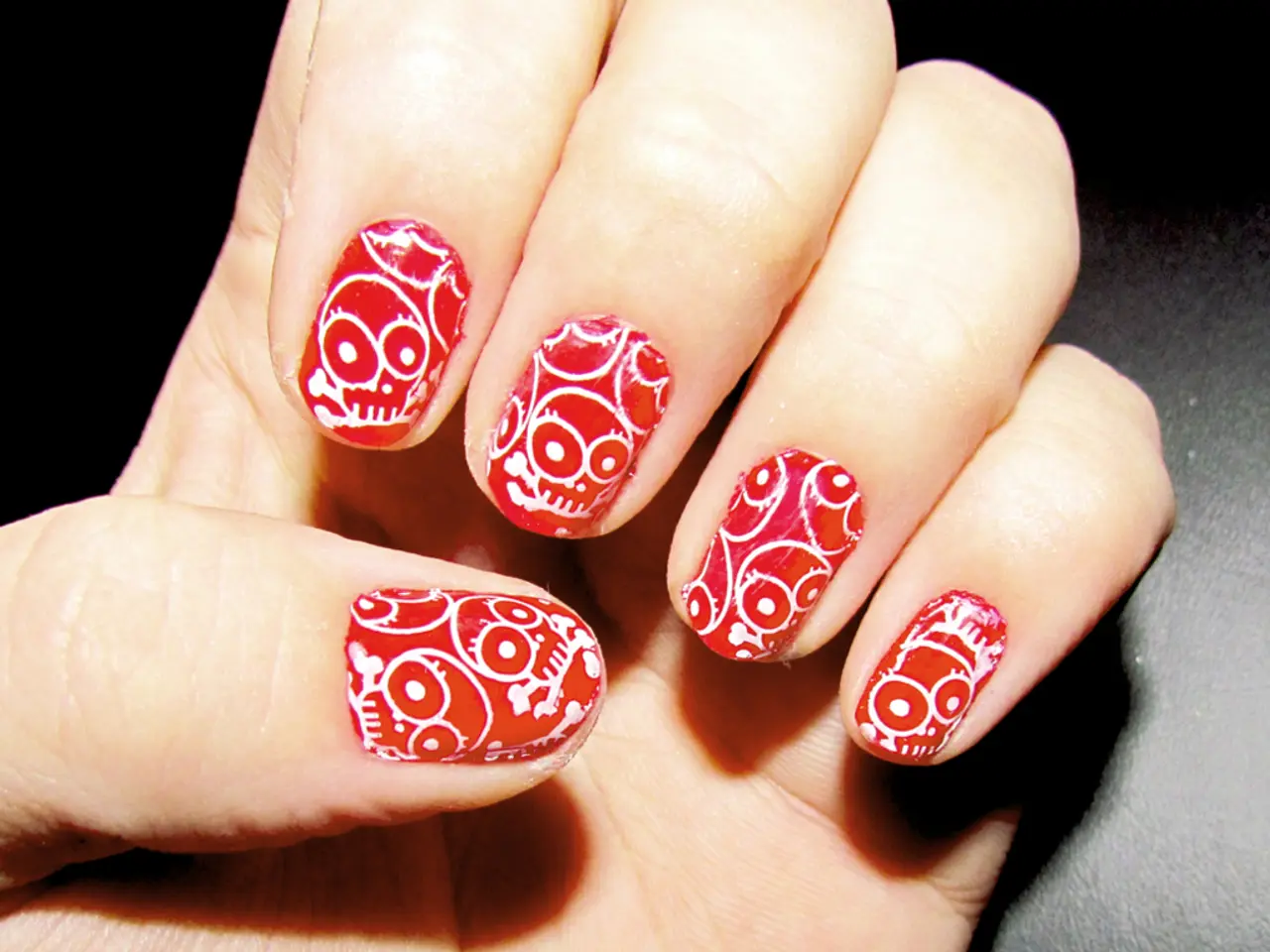Gel nails' potential impact on overall nail health and suggestions for maintaining strong, healthy nails.
Gel nails, with their durability and glossy finish, have become a popular choice for many seeking a long-lasting manicure. However, like any beauty treatment, gel nails come with their own set of potential risks and side effects.
The application process often involves filing down the natural nail surface, which can thin the nail plate and damage its protective layers, making nails brittle, soft, and prone to breaking. This thinning and weakening of nails can lead to further issues such as nail brittleness, peeling, and cracking.
Chemicals in gel polish, combined with removal methods such as peeling or scraping, can also cause nails to become brittle and prone to peeling or cracking. If gels lift or are improperly applied, moisture can get trapped between the natural nail and gel layer, creating an environment for fungal or bacterial infections around the nail.
Gel polishes contain chemicals like methacrylates that can cause allergic reactions if they come in contact with the skin, leading to redness, itching, or inflammation. A large survey reported that some individuals experienced itchiness, swelling, and burning during application of gel nail polish.
Gel polishing requires curing under ultraviolet (UV) light, which poses a minor yet cumulative risk of skin aging and possibly skin cancer over long-term repeated exposure. However, the risk is considered low due to the short exposure time to UV rays during gel manicures.
Prolonged exposure to UV light and gel polish has been linked to pterygium inversum unguis (PIU), a condition where the hyponychium - the area where the fingertip meets the nail - attaches to the nail plate.
Signs of damage or adverse effects include peeling, splitting, discoloration, ridges on the nails, brittleness, and inflammation around the nail bed.
In summary, while gel nail polish offers durability and aesthetic benefits, its use can compromise nail strength, increase infection risk, provoke allergies, and expose skin to potentially harmful UV rays. Proper application, avoiding skin contact, careful removal, and protecting skin during UV curing can help mitigate these risks.
The removal process involves soaking the fingertips in acetone for around 15 minutes or wrapping aluminum foil around acetone-soaked cotton balls on the fingertips. Following removal, individuals should wash their hands thoroughly and moisturize the nails, cuticles, and hands.
Experts recommend wearing broad-spectrum sunscreen during gel manicures or pedicures to take safety precautions. For those looking for alternatives, there are several options available, including standard manicure using regular nail polish, home manicure using nontoxic nail polish, shellac manicure, dip powder manicure, gel nail extensions, silk wrap nails, press-on nails, and nail stickers.
To maintain healthy nails, people should consider cleaning nails regularly, trimming nails straight across, filing nails to create round edges, keeping nails short, avoiding filing or buffing the nail surface, eating a balanced, nutritious diet, wearing gloves when washing dishes, using a nail and cuticle moisturizer, avoiding picking or biting nails and cuticles, refraining from cutting or pushing the cuticles, and trimming hangnails carefully.
It is also recommended to keep the nails bare for at least 1-2 weeks in between manicures to strengthen, repair, and rehydrate the nails. When choosing a salon or using at-home gel polish kits, it is important to ensure proper application and removal techniques to minimize the risks associated with gel nails.
- The chemical interaction between the removal process and gel polish can exacerbate eczema symptoms, as acetone (AQ) can cause skin dryness and irritation, potentially leading to redness, itching, or inflammation.
- Depression can be a side effect of prolonged exposure to depression-inducing chemicals found in some gel polish formulations, leading to a general feeling of sadness and lack of energy.
- Predictive science in health-and-wellness has shown that continuous use of gel polishes and UV light exposure might have long-term effects, such as increasing the risk of skin cancer and pterygium inversum unguis (PIU), a condition characterized by the attachment of the hyponychium to the nail plate.




